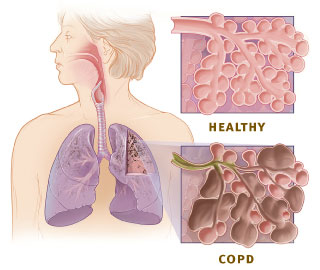Swimming is undoubtedly an excellent exercise for all ages and a habit of many. It is very much helpful in reducing weight and keeps joints free.
 Image via Wikipedia
Image via Wikipedia
The hygiene of indoor pool water is of much importance especially when pools used by many. It is traditionally achieved by adding chlorine and bromine to water.
Other methods like Advanced oxidation process (AOP), though available is not adopted by many.
There are several independent researches on the damaging effect of swimming pool disinfectants, which point to possible DNA damage from the by- products of disinfectants (DBP) like chlorine and bromine.
Chlorine in water produces hypochlorous acid and sodium hypochlorite which act against pathogens in water.
These chemicals react with urine, sweat, cells from body and cosmetics of the swimmers to produce harmful substances; which may cause DNA damage. That may increase the risk of cancer.
Recently, researchers have substantiated that a potentially harmful DBP haloacetic acids (HAAs) appear in the urine of swimmers within 30 minutes after exposure to chlorinated water
Government regulations in the United States and Europe limit the levels of HAAs that can appear in drinking water, purified mainly by chlorination method.
The limits stem from research suggesting that elevated levels of HAAs in municipal drinking water supplies may be linked to birth defects and a higher incidence of some cancers.
Swimming pool water may contain higher levels of HAA due to recirculation systems that lengthen water's exposure to chlorine and provide more time for HAAs to form.
The HAAs appear 20-30 minutes after exposure to water and gets eliminated from body within three hours.
These DBPs enter body mostly from inadvertent drinking of pool water; absorption through skin and inhalation of exhaled breath of swimmers to a lesser extent.
Children are more likely than adults to have a high concentration of HAAs after swimming.
It has been seen that after 40 minutes swimming there is fivefold rise in two mutagenic markers from exhaled breath, which have been associated with cancer risk in healthy subjects.
Another group of researchers found increase in at least one genotoxic substance, serum CC16 in volunteers who inhale the exhaled breath of swimmers rich in DBPs ( trihalomethanes). This indicates increases lungs tissue permeability, which may also be exercise induced.
Further the researchers identified 100 DBPs in swimming pool water some of which are not chemically identified.
Though swimming is not to be discouraged; at the same time swimming pool safety rules must be followed strictly.
· Taking preliminary bath,
· Not urinating in pool water,
· Not swallowing pool water and
· Wearing dress as specified.
· Further chlorination as a method of disinfection may be dispensed with in favor of AOP and other safe methods of disinfection.
The hygiene of indoor pool water is of much importance especially when pools used by many. It is traditionally achieved by adding chlorine and bromine to water.
Other methods like Advanced oxidation process (AOP), though available is not adopted by many.
There are several independent researches on the damaging effect of swimming pool disinfectants, which point to possible DNA damage from the by- products of disinfectants (DBP) like chlorine and bromine.
Chlorine in water produces hypochlorous acid and sodium hypochlorite which act against pathogens in water.
These chemicals react with urine, sweat, cells from body and cosmetics of the swimmers to produce harmful substances; which may cause DNA damage. That may increase the risk of cancer.
Recently, researchers have substantiated that a potentially harmful DBP haloacetic acids (HAAs) appear in the urine of swimmers within 30 minutes after exposure to chlorinated water
Government regulations in the United States and Europe limit the levels of HAAs that can appear in drinking water, purified mainly by chlorination method.
The limits stem from research suggesting that elevated levels of HAAs in municipal drinking water supplies may be linked to birth defects and a higher incidence of some cancers.
Swimming pool water may contain higher levels of HAA due to recirculation systems that lengthen water's exposure to chlorine and provide more time for HAAs to form.
The HAAs appear 20-30 minutes after exposure to water and gets eliminated from body within three hours.
These DBPs enter body mostly from inadvertent drinking of pool water; absorption through skin and inhalation of exhaled breath of swimmers to a lesser extent.
Children are more likely than adults to have a high concentration of HAAs after swimming.
It has been seen that after 40 minutes swimming there is fivefold rise in two mutagenic markers from exhaled breath, which have been associated with cancer risk in healthy subjects.
Another group of researchers found increase in at least one genotoxic substance, serum CC16 in volunteers who inhale the exhaled breath of swimmers rich in DBPs ( trihalomethanes). This indicates increases lungs tissue permeability, which may also be exercise induced.
Further the researchers identified 100 DBPs in swimming pool water some of which are not chemically identified.
Though swimming is not to be discouraged; at the same time swimming pool safety rules must be followed strictly.
· Taking preliminary bath,
· Not urinating in pool water,
· Not swallowing pool water and
· Wearing dress as specified.
· Further chlorination as a method of disinfection may be dispensed with in favor of AOP and other safe methods of disinfection.
...
Click here to Subscribe news feed from "Clinicianonnet; so that you do not miss out anything that can be valuable to you !!
...






